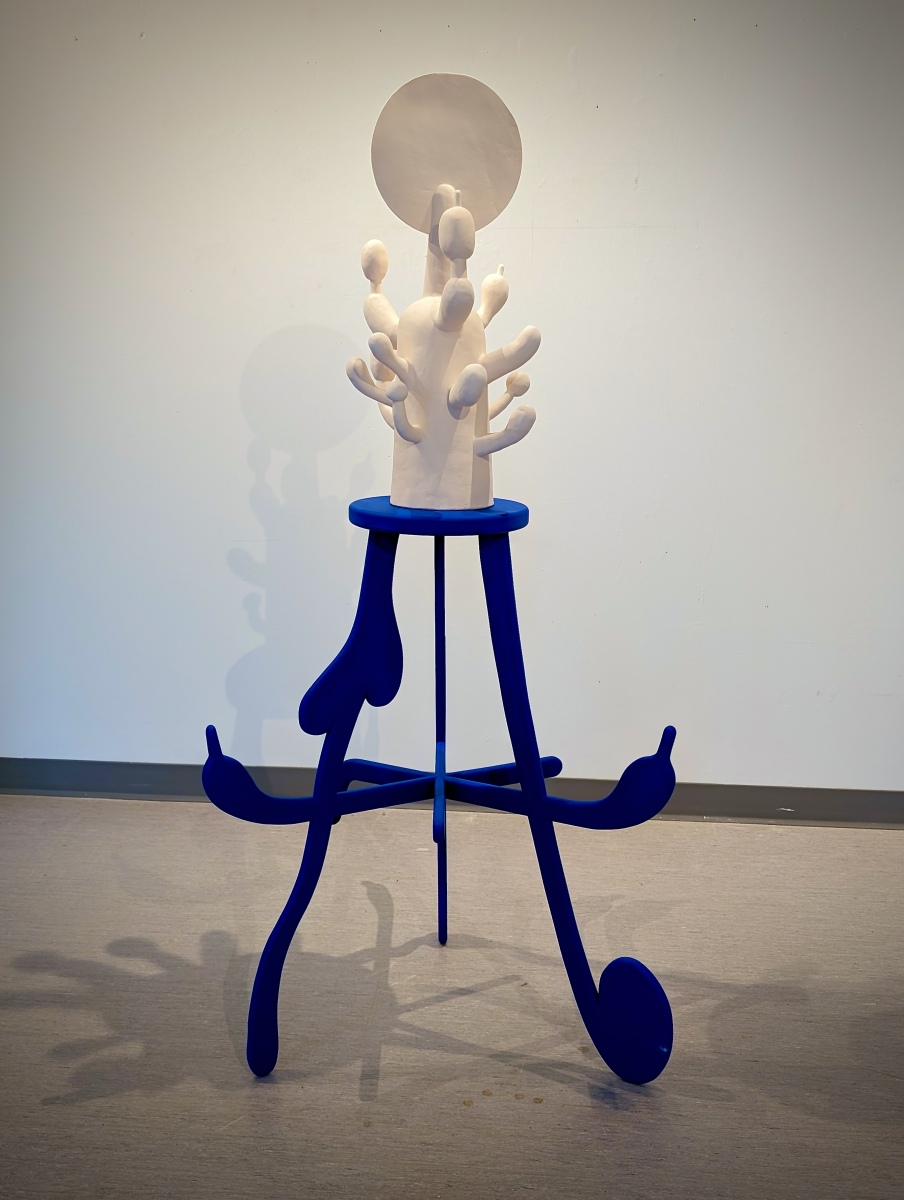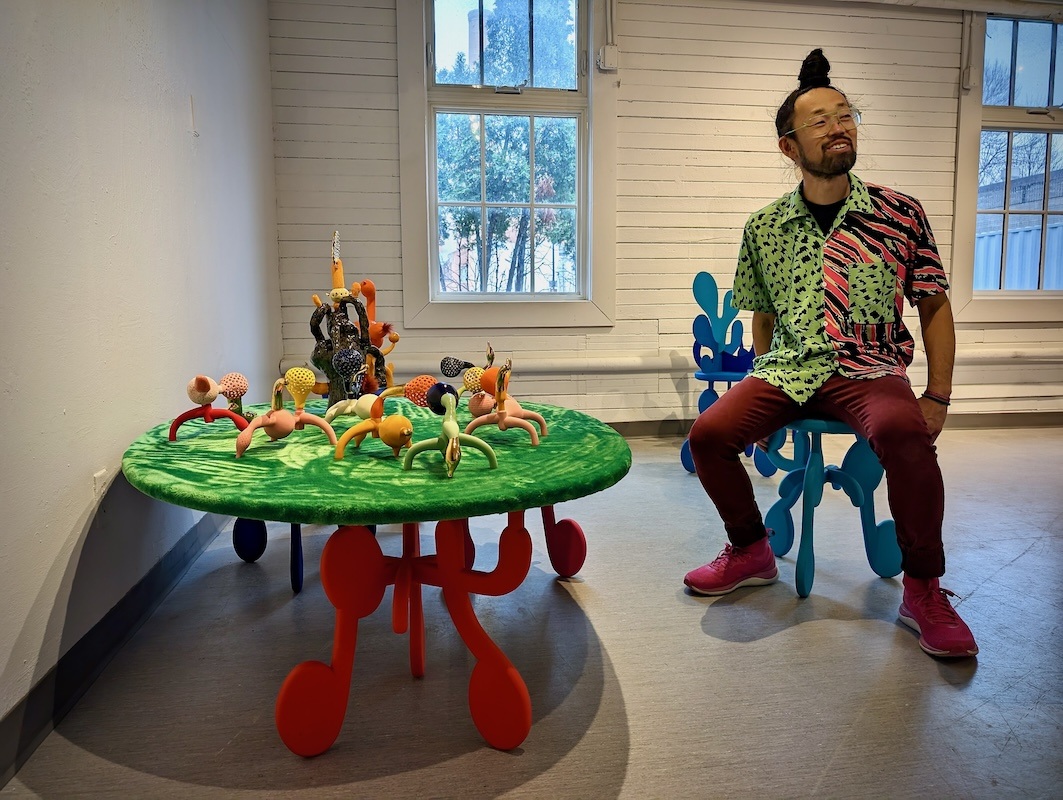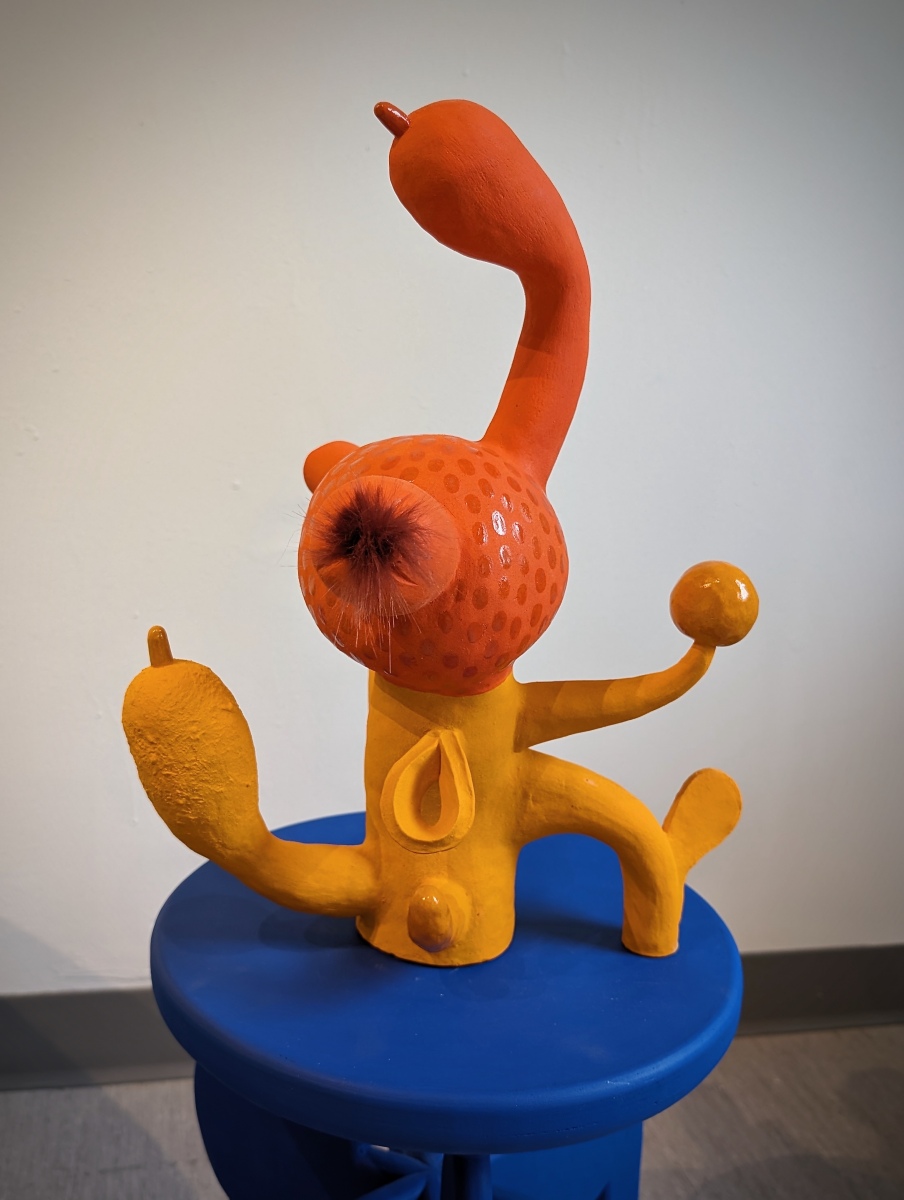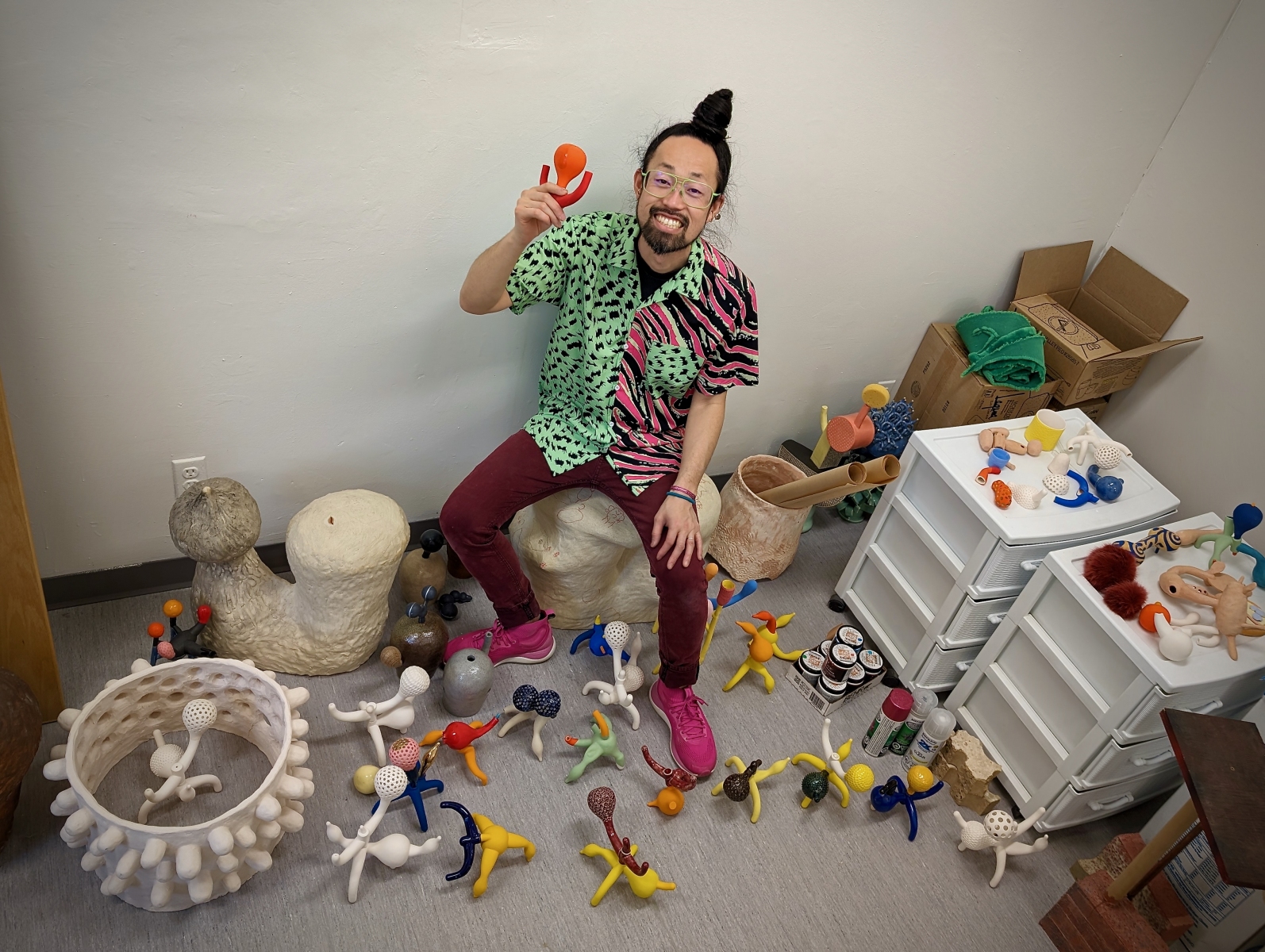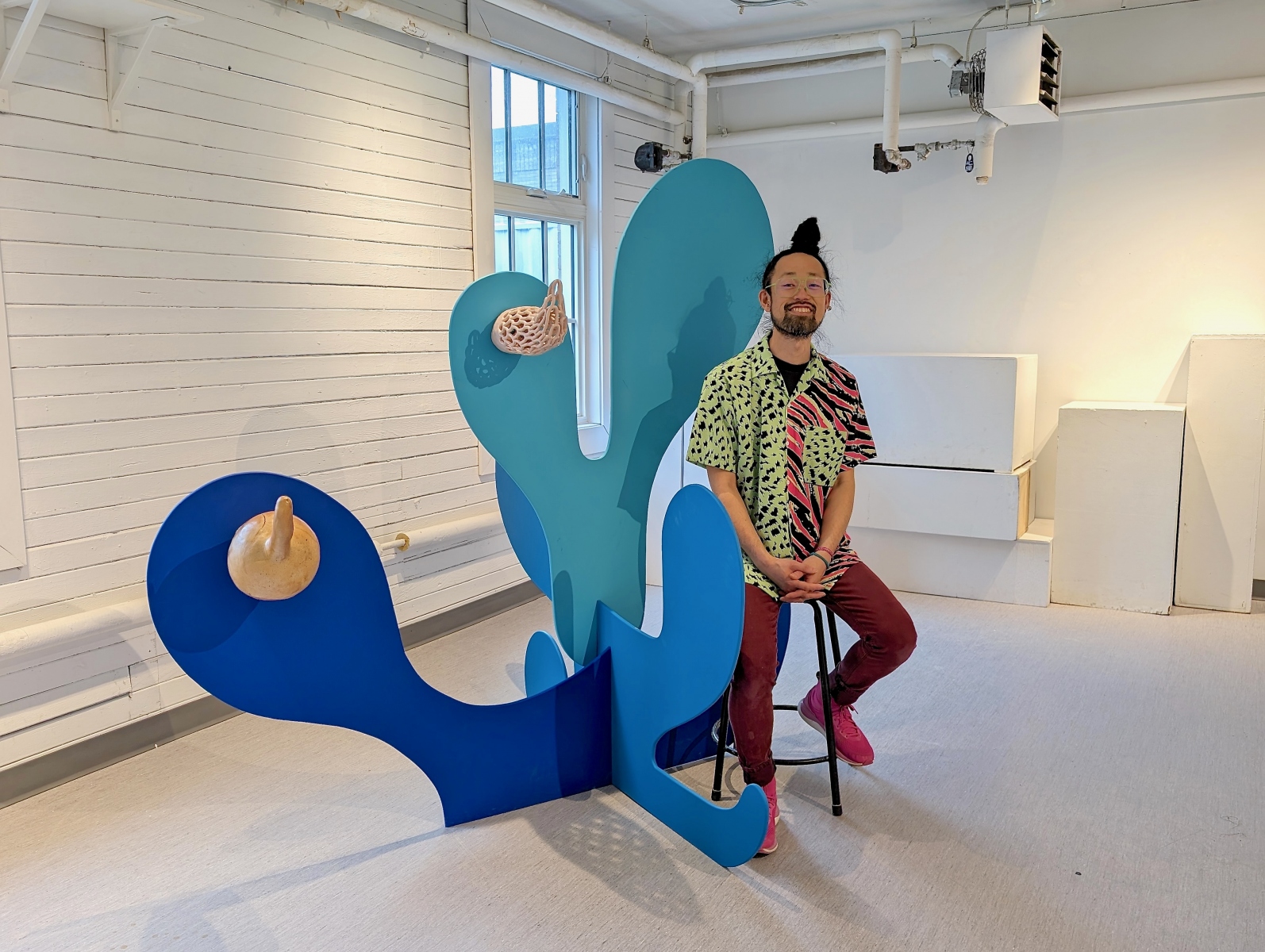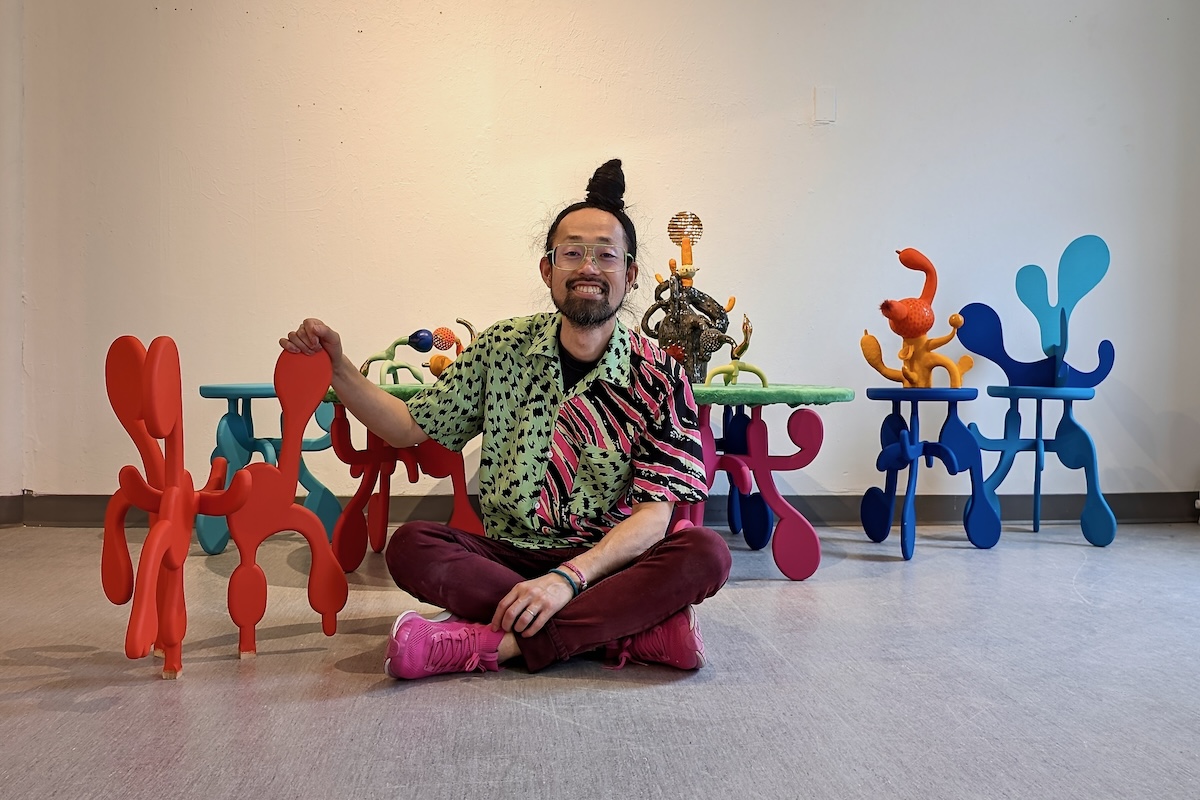
Artist and MFA student Takashi Iwasaki surrounded by his art pieces. Photo: Phil Koch
The shape of joy: Asian Heritage Month feature
Artist and MFA student Takashi Iwasaki’s work is an antidote to apathy
For artist Takashi Iwasaki in his life and work, joy is foundational. And not just any kind, but joy and pleasure that’s sustainable and inclusive of others.
Iwasaki first came to Canada to study from a small town in northern Japan 20 years ago. Since graduating from UM’s fine art bachelor honours program in 2006, he’s become well-known for his playful, vibrant artworks, including paintings and embroidered pieces. Now he’s back at the School of Art to complete a master’s degree with a focus on ceramics, translating his quirky lines into mischievously elegant 3-D ceramics and wood shapes.
He likes making objects that are “usable, touchable, which engage physically and emotionally to some level,” he says.
Being confronted by increasing turmoil and inundated with online “perceived interconnectedness,” as he puts it, can result in apathy, anger or fear rather than empathy, care and action.
“I think it’s easier for us to have some sort of apathy because [often what we see of world events] looks like theatrical display of some actual events, like I’m watching TV, like how is it different from action movies or videos,” he says. “There’s lots of killing, and in real life. Oh, it looks like something happening, but it’s on the screen for me. I’m not there.”
It’s why his idea of art is to evoke some sense of pleasure, joy, contentment and positive feeling as an alternative.
He explains, “I don’t do specific political work of any kind, but I think in some way I can make [the art] sort of not to forget other senses.” Not expressing his political view through his work itself is a political stance by choice — a seemingly paradoxical statement, but intentional, he says.
Iwasaki’s generous and understated yet nonetheless meticulous approach to art reflects this combination of thoughtfulness and playfulness. He is quite philosophical, and this approach suffuses his life and work.
“Because I acknowledge that life could be short…. I think there’s always death,” he says. “So what I think is, ‘Oh, life could be so short, why wouldn’t I enjoy this moment that I can share with other people, with friends?’ That fulfills my feeling and keeps me busy and hoping that will be conducive in some way to my viewers.”
Duality and being intercultural
He reflects that he likes what being Japanese and Canadian brings him. It’s a kind of “duality in the day-to-day,” he explains. In Japanese culture, he says, “it’s thought to be graceful to hide and you don’t want to be too emotional or expressive … and it’s more of a collective mentality. Whereas in North America the population in general is more, I think, focused on individuality and individual expression.”
Both approaches have certain advantages and disadvantages, allowing him to switch between them. He says, “I can pick and choose, and from time to time in this situation maybe focusing on group mentality works better, but if I don’t say certain things, I won’t be heard.”
The meaning of Asian heritage … now and 10 generations from now
What does Asian heritage Month mean to him? He says gaining knowledge about other cultures and getting to know people at an individual level can help with understanding and overcoming stereotypes — and alleviate fear of difference.
“I think that’s the most important thing,” he says. “By knowing what they are like, and also alternately finding that they’re not very different [from themselves]. Knowing people at the individual level, most people think, ‘oh, they’re nice.’ Try not to have more fears when you can conquer that with knowledge, appropriate knowledge, not skewed knowledge.”
The meaning of Asian heritage, he adds, has expanded for him since he and his wife got together and had children. Shih-Han Iwasaki, who’s from Taiwan, is currently pursuing her MBA at UM. They want to pass on their heritage to their two children, aged nine and nearly six, which is why they speak Japanese and Mandarin (along with English and French).
His wife says enjoying food together from their own and other cultures is also important in their lives. For them, food is a way of enjoying and culturally enriching life, in appreciating different cultural foods.
Takashi laughs, “When we look at our kids, I think their palette is a little wider.”
On the other hand, he says, “I think in 10 generations from now, especially in Canada, we might not know what heritage we have, which is a kind of soothing or, you know, relieving thing to think about…. That’s my dream. We are all earthlings.”
Meaningful experiences, connecting and sharing positive values
What was the best part of his UM experience this time around? Without a doubt, the community and being part of a cohort of like-minded people, he says.
He attempts to create meaningful friendship or relationship with other people, “nurturing curiosity, being open-minded, being content with my own work and in the process of creating it,” he says.
“My artworks bring that kind of joy to me,” he adds, “and they are also tools for me to connect with others in sharing certain positive values in our lives. Of course, there is more to it in doing what I do, but that’s a significant part of what I do and try keep doing.
“It’s my life-long pursuit.”
MFA Thesis exhibition
May 17 – June 21, 2024
Opening reception (open and free to public, no reservations required)
Friday, May 17
5-8 p.m.
School of Art Gallery
255 ARTlab, 180 Dafoe Road,
University of Manitoba








